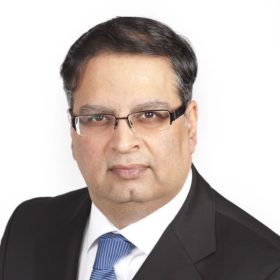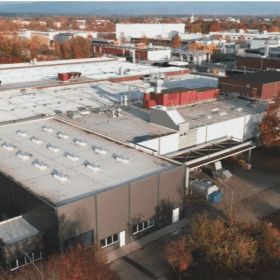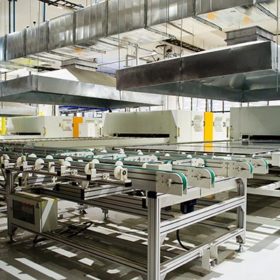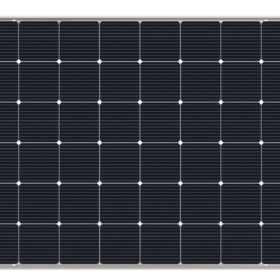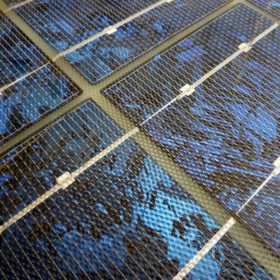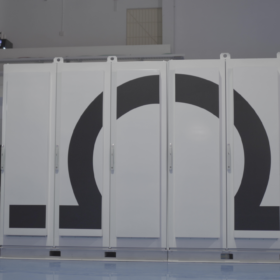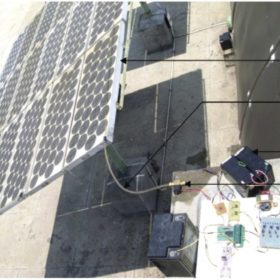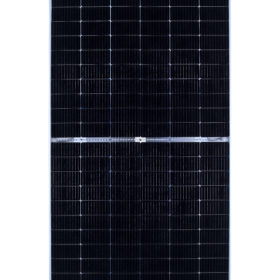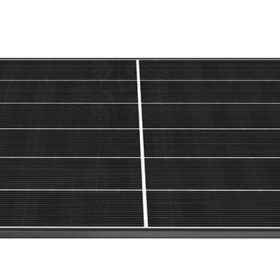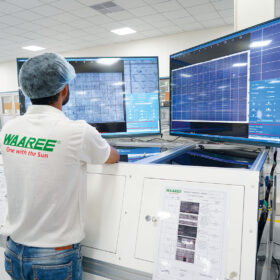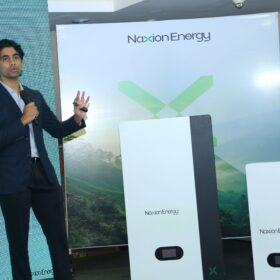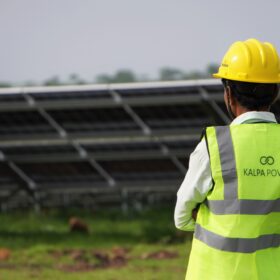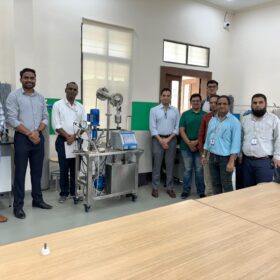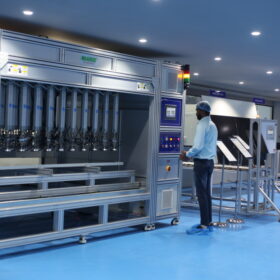RenewSys expands solar encapsulant capacity to 3 GW, aims for 11 GW
The Indian solar manufacturer has expanded the overall encapsulant capacity to 3 GW with the addition of a new line at its Bengaluru facility. The latest addition is capable of ethylene-vinyl acetate (EVA) and polyolefin elastomer (POE) sheets. The manufacturer is looking to further expand its encapsulant capacity to 11 GW.
Exide infuses US$2.68 million into lithium battery JV with Leclanché
Exide Leclanche Energy Private Limited, the joint venture with Swiss energy storage specialist Leclanché, has a lithium battery pack and module assembly factory in Gujarat.
India’s solar module manufacturing capacity on track to soar 400% in four years
Ratings agency Crisil analysts estimate India will have 38-43GW of annual solar module manufacturing capacity by the end of March 2025. Production capacity will be driven by strong domestic demand, favorable government policy, raised module conversion efficiency, and price competitiveness, according to the ratings agency.
TOPCon vs PERC
TOPCon solar cells are on their way to fully compete with PERC solar products, according to recent research from Germany’s Fraunhofer ISE. Efficiency gains for the TOPCon concept, however, are necessary to help it capture more market share, as production costs remain higher than those for PERC tech. A series of cost-driven strategies to make TOPCon modules advance were outlined in the study.
REIL seeks 200,000 silicon solar cells
Bids are invited from Indian manufacturers to supply five-busbar mono-/multi-crystalline silicon solar cells rated for minimum of 4.62 watts. Bidding closes on January 27.
Ohmium partners IIT Madras on PEM electrolyzer R&D
The USA-headquartered green hydrogen generator developer has entered into an R&D partnership with IIT Madras Research Park (IITMRP) to improve the performance and lower the cost of its polymer electrolyte membrane (PEM) electrolyzers.
Spraying water system for solar module cooling
A British-Indian research group has developed an active cooling technique that is claimed to improve a PV system’s yield by around 0.5%. The system could be used in residential solar arrays and the water heated by the PV modules may be fed into a solar water heating system.
Vikram Solar launches M10 modules
The Indian manufacturer has unveiled Series 10 monocrystalline PERC solar modules featuring 144 half-cells based on M10 wafer. The modules are available in monofacial and bifacial versions with a maximum efficiency of 21.33% and 21.13%, respectively.
PLI Scheme for battery cell manufacturing receives bids for 130 GWh of capacity
The production-linked incentives scheme for advance-chemistry battery cell manufacturing received an encouraging response with bids received for 2.6 times the 50 GWh manufacturing capacity to be awarded.
Panasonic unveils 410 W solar panel with 22.2% efficiency
The new heterojunction module series is compatible with Panasonic’s Evervolt battery and has a power output ranging from 400 to 410 W. It also features a temperature coefficient of -0.26% per degree Celsius.
